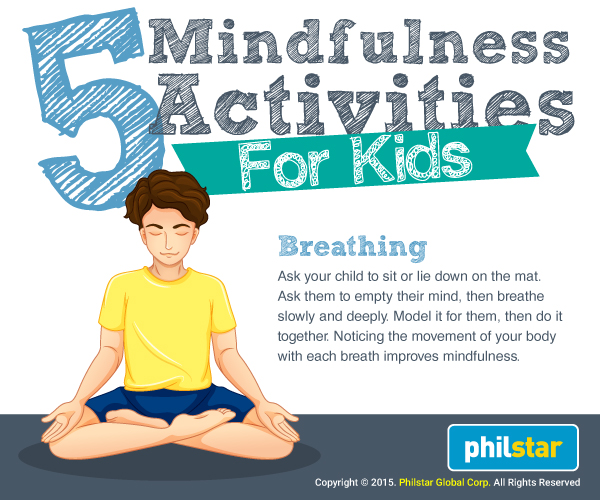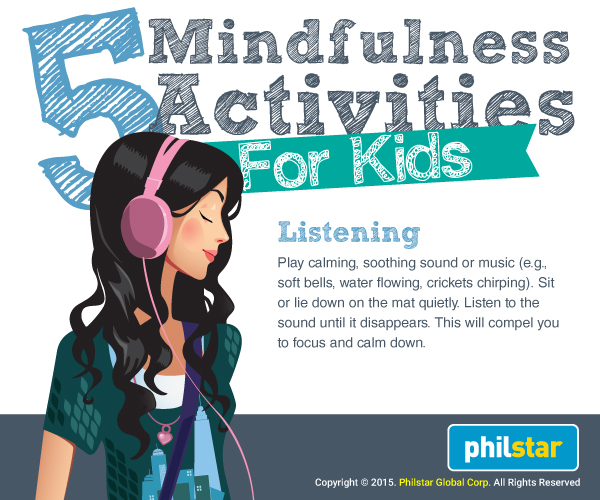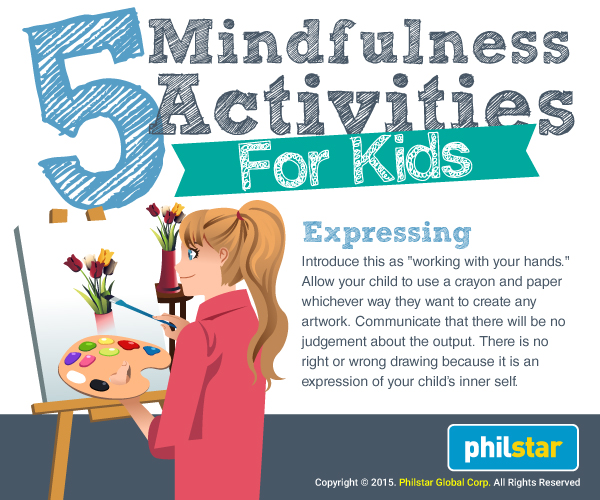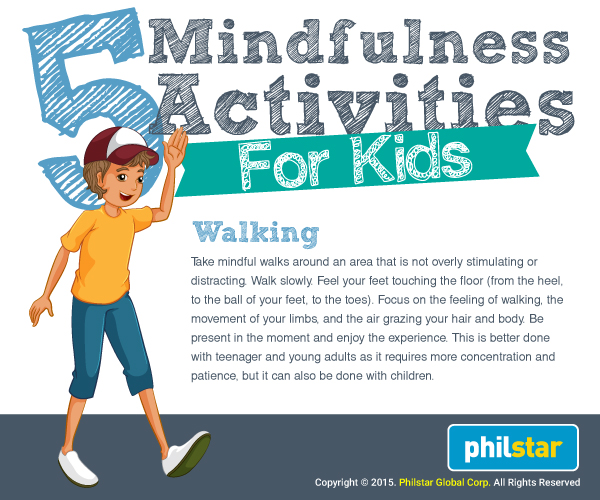Why you should teach 'mindfulness' to your children
MANILA, Philippines - Mindfulness is a way of being that both adults and children can practice. It may sound complicated, but it really just means awareness. It is the practice of noticing things in the moment, especially those overlooked, such as one’s breathing, feelings, thoughts or actions.
Recently, we came across an article in Time Magazine that talked about the benefits of mindfulness on children. It highlighted a study done by the team of Kimberly A. Schonert-Reichl, a developmental psychologist at the University of British Columbia. The study’s findings show that children who practiced mindfulness in a four-month period performed better academically, showed more positive social behaviors, were less aggressive, more optimistic, and less stressed than those who did not practice it.
In fact, the children who were mindful scored 15 percent higher in math than the others. We know mindfulness can decrease stress and aggression, but that it can positively affect academic learning is a revelation! It makes sense as mindfulness trains the child to silence distractions, be calm and concentrate, thereby heightening their capacity for learning.
Another interesting discovery was that the teachers who participated in the study also experienced a calming effect. Mindfulness is indeed remarkable.
It is important then that we teach mindfulness to our children. But remember, it cannot be taught without first being practiced. In doing so, we not only nurture a new generation of kinder and more successful individuals, but we also open ourselves to positive transformation.
In lieu with this, here are some mindfulness activities for kids, as suggested by Dr. Honey Carandang. Children can do these five techniques (breathing, listening,expressing, moving and walking) for 5-10 minutes a day at different times: before school, before homework, or before bedtime. It can be scheduled and regimented if structure helps your child, or it can be changed up (to keep the novelty and fun of it) but maintained on a flexible daily schedule.
At home designate a ‘breathing space’ for these activities. Light a candle, change the lighting, or place a special mat to create a relaxing atmosphere. The only rule is that the person’s mood and right to be quiet are respected.
1. Breathing
Ask your child to sit or lie down on the mat. Ask them to empty their mind, then breathe slowly and deeply. Model it for them, then do it together. Noticing the movement of your body with each breath improves mindfulness.

2. Listening
Play calming, soothing sound or music (e.g. soft bells, water flowing, crickets or chirping). Sit or lie down on the mat quietly. Listen to the sound until it disappears. This will compel you to focus and calm down.

3. Expressing
Introduce this as "working with your hands." Allow your child to use a crayon and paper whichever way they want to create any artwork. Communicate that there will be no judgment about the output. There is no right or wrong drawing because it is an expression of your child's inner self.

4. Moving
Practice this simple exercise with your child. Slowly raise your hands forward, upward, then downward. Move in a slow, steady, intentional manner. Look at your hands. Feel the air being pushed upward then downward as your move them. This silences your mind and lets it focus.

5. Walking
Take mindful walks around an area that is not overly stimulating or distracting. Walk slowly. Feel your feet touching the floor (from the heel to the ball of your feet, to the toes). Focus on the feeling of walking, the movement of your limbs, and the air grazing your hair and body. Be present in the moment and enjoy the experience. This is better done with teenagers and young adults as it requires ore concentration and patience, but it can also be done with children.




















